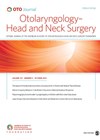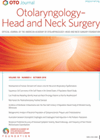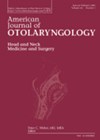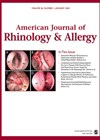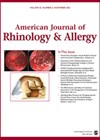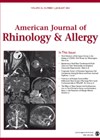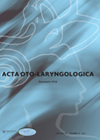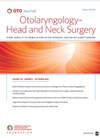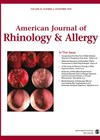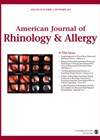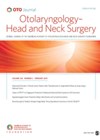
Journal Reviews
Does middle turbinate resection affect olfaction in endoscopic transsphenoidal surgery?
The middle turbinates (MT) are sometimes partially resected during endoscopic transnasal transsphenoidal pituitary surgery to improve surgical access. Some outfracture the middle turbinates instead. This article presents results of the first prospective randomised study, investigating the effects of such surgery...
REVISIONS acronym for preoperative imaging review in revision endoscopic sinus surgery
The authors have developed an acronym to aid evaluation of preoperative sinus CT imaging in revision endoscopic sinus surgery (RESS). To determine which pertinent aspects of anatomy to include, a systemic review of studies that investigated anatomic contributions to persistent...
Prophylactic gastrostomy tubes in advance of chemoradiotherapy for advanced head and neck malignancies – are they worthwhile?
It is well recognised that radical chemoradiotherapy (CRT) for head and neck cancers can significantly affect swallowing, especially if radiotherapy is delivered to the hypopharynx and/or both sides of the neck. As such, prophylactic gastrostomy tubes are often advocated in...
Age is not an issue in sinus surgery
We have an increasingly aged population, and hence older and older patients are presenting with sinonasal issues and the potential need for endoscopic sinus surgery (ESS). The authors sought to identify if older patients (age >70) have more complications post...
When to operate on a patient without chronic disease?
As ENT surgeons, we spend a lot of time managing chronic rhinosinusitis, so a review and update on the management of the acute disease is always helpful. The standard medical treatment of antibiotics, nasal steroids and nasal decongestants are reported...
A new era in the treatment of recalcitrant nasal polyps?
Chronic rhinosinusitis with nasal polyps (CRSwNP) can be difficult to treat effectively in patients with aggressive or recalcitrant disease. Omalizumab (Xolair) is a monoclonal anti-IgE antibody with proven benefits for patients with moderate/severe asthma and CRSwNP, but this study looks...
Simple preoperative tests predicting outcomes for ESS patients?
We are all familiar with patients suffering extensive nasal polyps who relapse all to soon after careful and thorough endoscopic sinus surgery (ESS). This paper looks to answer whether we can predict which patients will do well, and which less...
Earlier intervention to correct anosmia?
This is an interesting study aimed to determine the timing for successful surgical intervention in improving the sense of smell in patients with chronic rhinosinusitis with nasal polyps (CRSwNP). A total of 86 CRSwNP patients with loss of smell and...
Eustachian tube dysfunction usually improves following endoscopic sinus surgery
This study investigated effects of endoscopic sinus surgery (ESS) on eustachian tube dysfunction (ETD) and factors associated with improvement. This was a retrospective study which included 302 patients over 17 years old who underwent ESS between 1 December 2016 and...
An alternative view and access point
Fungal sinusitis is a common problem and it is well recognised that it can be difficult to remove all of the fungal matter from the maxillary sinus to ensure no recurrence or residual disease. This study describes a technique utilising...
Sinus implants to treat recalcitrant polyps
It is well established that the burden of chronic rhinosinusitis on healthcare costs and patients’ quality of life is high, and that current mainstream treatment options of oral or topical steroids are not without problems. This paper compares two RCTSs...
Sphenopalatine ganglion block in endoscopic sinus surgery reduces intra and post-operative morbidity
The authors present results of a meta-analysis to investigate the role of sphenopalatine ganglion block (SPGB) in reducing postoperative pain in endoscopic sinus surgery (ESS). An electronic database search (Pubmed, SCOPUS, Google Scholar, Embase, and the Cochrane Register of Controlled...

